Over three years ago, I mentioned picking up a cryptomeria at Maruyama’s Bonsai Nursery, but had yet to follow up with a post. Here’s the tree.
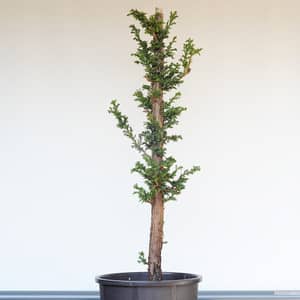
Tall cryptomeria – about 48″
The tree was the left-over base from which a large air layer had been removed. Although there was little taper, much of the trunk was straight so I thought this could become a good project.
I’d long wanted a cryptomeria bonsai after watching a friend’s tree develop over many years. Although the tree is now in a different collection, it’s under the care of Michael Hagedorn and is looking great (see Michael’s post “Cryptomeria and Foemina juniper year two“).
As the base of the trunk was a bit wobbly, I spent a long time spinning the tree on a turntable trying to identify the lowest spot from which I could layer a straight section of trunk. I ended up selecting a point about a quarter of the way up.
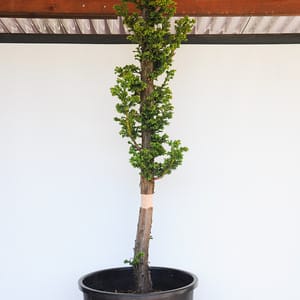
Curvy below, straight above
The layer process was straightforward. Having practiced on younger trees (see “How to air layer cryptomeria for bonsai” and “Cryptomeria from air layer“) I was ready to cut into this much larger tree. I began by removing a large ring of bark. In hindsight, the ring didn’t need to be so large.
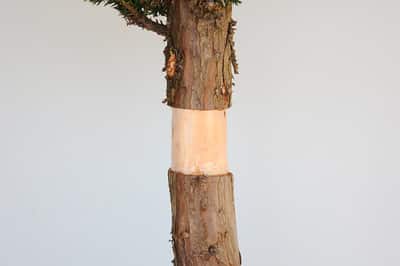
After removing a ring of bark
Next I affixed some plastic with aluminum wire.
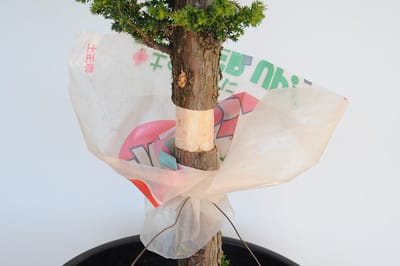
Putting an old akadama bag to use – Power Up!
I may have skipped root hormone as cryptomerias layer easily. After adding moss, I held moss and plastic in place with wire.
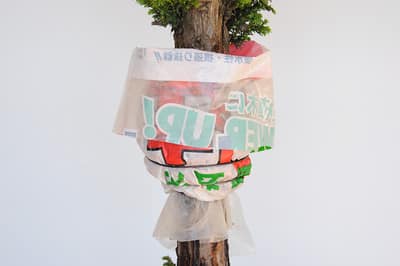
All tied up
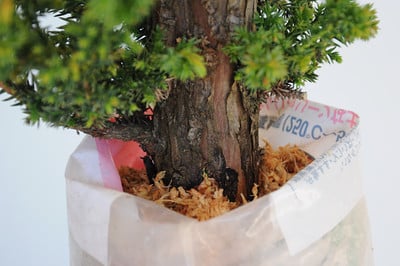
After watering
I completed this work in May of 2011. By fall, I saw lots of roots so I removed the moss and took a look.
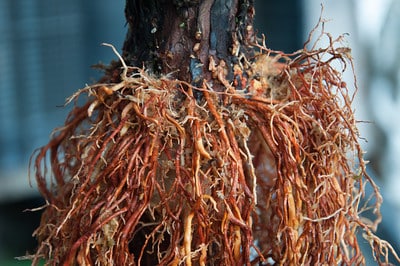
New roots – November 2011
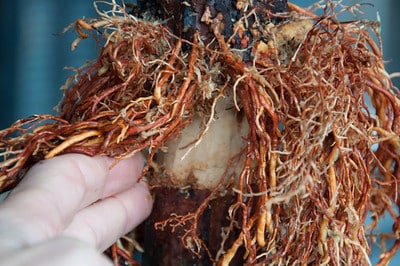
The ring of bark behind the roots
This is where the fun started. Although there were plenty of roots, I wasn’t comfortable removing the layer so I built a temporary pot in which the roots could continue to grow. The pot comprised two nursery flats lined with plastic screen held together with aluminum wire. I assembled the pot in place and carefully spread out the roots.
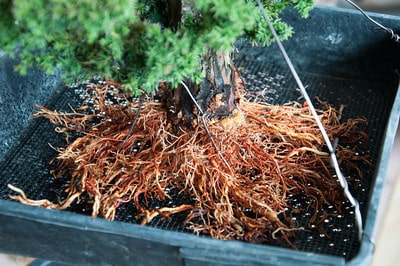
Spreading out the roots
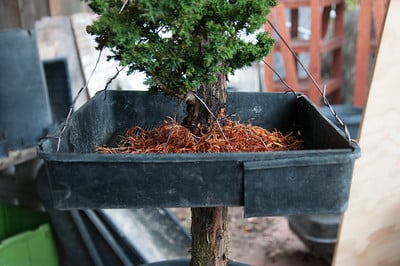
From the side
I added a little bit of bonsai soil at a time, working it in between the roots as I went along.
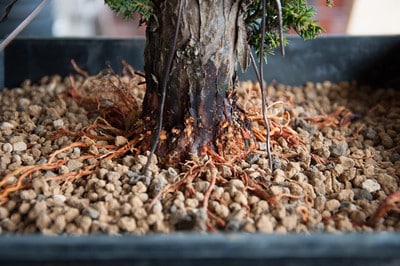
Adding bonsai soil
When I was finished, I covered the soil with shredded sphagnum moss to retain extra moisture
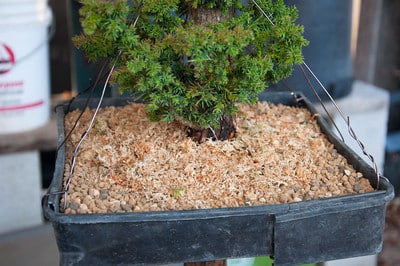
Soil with sphagnum moss
The result was easily the strangest looking tree in the yard.
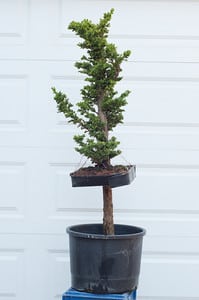
Cryptomeria in two pots
I’ll cover part 2 of the process – removing the layer – on Friday.
Subscribe to Bonsai Tonight
New Posts Delivered Every Tuesday and Friday
Dallas Bonsai says
Amazing! I look forward to your follow up post on Friday.
Chris @ Dallas Bonsai, via reddit 🙂
Dave says
Nice post Jonas. I remember last years post on layering a Cryptomeria. Do you think your Hinoki will root as easily as these do?
Jonas Dupuich says
Good question Dave – cryptomeria seem to have a preternatural ability to root so I don’t expect the hinoki to root as easily. Hinoki roots are typically vigorous and I’m hoping some of that translates to the layer process. Thanks for the note!